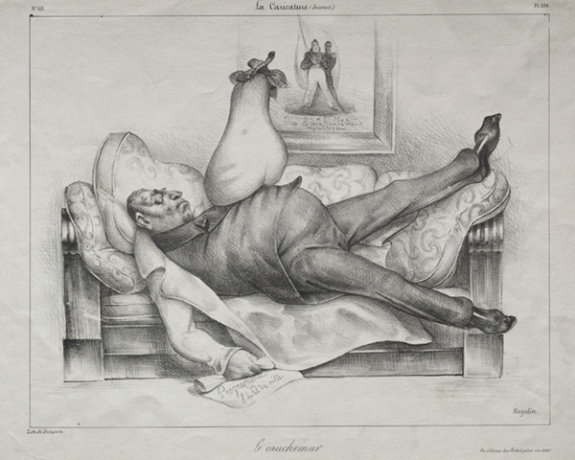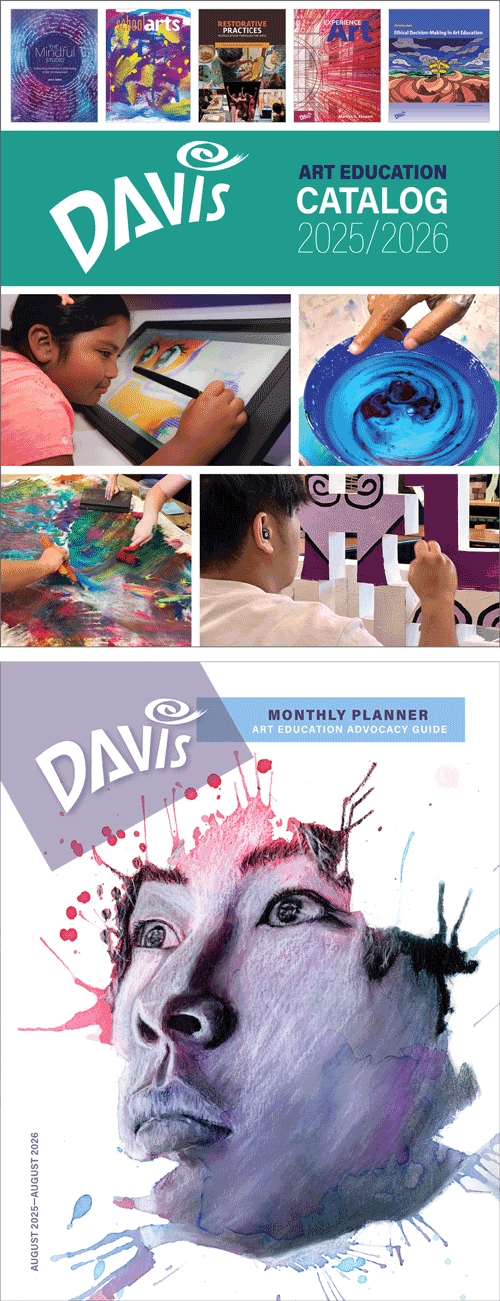This Day in (Art) History: Abdication of King Louis-Phillipe of France
Louis Phillipe (1773–1850) was king of France from 1830–1848, until he was deposed by a revolution of the working classes which rejected his conservatism. Although theoretically a constitutional monarch, he did not want to see the lower middle and lower classes get voting rights, and he wanted to rule without parliament (basically as a dictator). He was an extremely overweight man, and Daumier's symbol for him was a pear.
This Day in (Art) History, 24 February 1848: Abdication of King Louis-Phillipe of France
This lithograph by satirist/caricaturist/printmaker Honoré Daumier (1808–1879) prefigures the abdication of Louis-Phillipe’s “retirement” by 16 years. It took that long for France to be rid of the dictatorial king.
 |
| Honoré Daumier, The Nightmare (Le Cauchemar), plate 139 in La Caricature magazine, issue no. 69, February 23, 1832. Lithograph on paper, 10 ¼" x 13" (26 x 33 cm). Cleveland Museum of Art, Gift of Frank S. Lahm. Public domain image. (8S-30245) |
In this print, Lafayette, the hero of the American and French Revolutions taking a nap has a nightmare, symbolized by a pear weighing down on him. Lafayette (who is quite corpulent himself) had initially supported Louis Philippe's ascension to king but learned to regret it soon after. After the Revolution of 1830, Daumier began producing satirical political cartoons for the anti-monarchist magazine La Caricature. These cartoons ultimately landed him in jail for six months in 1832 for defaming the monarchy. Daumier was imprisoned for his unflattering caricature of the king as a pear. But he had the last laugh twelve years and one day later—on 24 February, 1848—Louis-Phillipe was forced to abdicate (give up being king).
During the rapid industrialization of Western Europe in the first half of the 1800s, European cities had to cope with increased poverty, overcrowding, and high food prices. At the same time, the middle class was increasingly dissatisfied with government inaction of absolute monarchs, censorship of the press, and oppressive judicial systems. France itself had three revolutions after the first of 1789–1799: 1830, 1838, and 1848. With the middle class looking for new governments as solutions to everyday problems, a new generation of artists found the academic formulas that had begun in the 1700s as out-of-step with society.
Neoclassicism and Romanticism—with their emphasis on allegory, ancient history and exotic drama—did not relate to everyday concerns. Although Romanticism took the step to represent current events with realistic emotion, the new Realists strove to depict everyday life without theatricality, and with an emphasis on observed facts of everyday life, no matter how brutal, that—to some critics—often bordered on the vulgar. This new socio-political awareness was mirrored in contemporary literature of such authors as Charles Dickens and Emile Zola. The artists who called themselves Realists were the first artists in history to consider themselves "avant-garde."
While Daumier's radical politics and anti-monarchist views definitely imbued his art with a quality that was intended to invoke sympathy for the poor (Romanticism), his work depicted the plights of the downtrodden of Paris with such stark Realism, that it transcended the exotic and idyllic sparks of Romanticism. While his paintings and prints have a subjective point of view, they are scenes of common people in everyday, often squalid conditions.
Daumier certainly understood being poor, the son of a glass artist and aspiring (but failed) poet put out of work by the Industrial Revolution. His family moved to Paris when he was eight, and by twelve he was forced to help the family earn a living, working in a bailiff's office as a clerk. There he got acquainted with the legal profession and the plight of poor people, which became a driving force in his art the rest of his life.
At sixteen, Daumier studied under the aesthetician and student of Jacques-Louis David, Alexandre Lenoir (1761–1839), who got Daumier acquainted with the paintings of Ruben and Titian, as well as classical sculpture. He took formal artistic training at the Swiss Academy in Paris, getting his earliest jobs learning the new medium of lithography for a publisher named Belliard. At twenty-one, he published his first lithographs in the magazine La Silhouette.
After 1830, Daumier also produced lithographs for Le Charivari, the first daily newspaper illustrated with lithographs. Daumier is best-known for his satirical lithographs. He produced almost 4000 prints in his lifetime. He also supplemented his income with painting. While he did some portraits and genre scenes, many of his paintings concern the same subjects as his prints—the lives of the poor, struggling underclass.

Comments